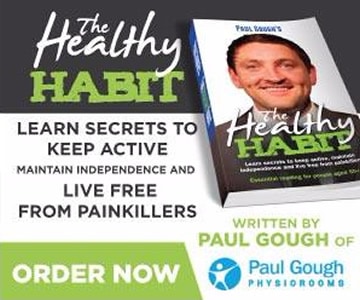Is ligament damage worse than muscle damage?
This is a question I hear from every client when I tell them they’ve damaged their ligaments and usually it’s going to take a little longer than it would be to heal the same degree of damage in a muscle.
In order to fully answer this question I’ve got to explain a little bit about ligaments first……..
What are ligaments?
Ligaments are tough small bands of connective tissue that join bone to bone and provide support and structure to a joint. They are made up of many fibres of collagen, which is a strong dense material that provides the joints with phenomenonal tensile strength.
They also provide feedback to the brain that tells us what position our joints are in without us having to look.
How badly can they be damaged?
Just like a muscle there are varying degrees of damage that can occur to the bodies ligaments. A grade one damage is where a few of the fibres are damaged and this causes local pain in the joint especially in any movements that that ligament would support.
A grade two damage is where a lot more fibres are damaged and this tends to cause a significant amount of swelling in the area as well as restricted movement with high pain.
A grade three is a complete tear of all the fibres where the joint is now longer supported and the ligament is no longer intact. This often leads to surgical intervention to repair the damage.
How do they heal?
As with any damage to the body once the inflammation stage has gone the body starts to lay down new muscle and scar tissue.
Think of this as playdoh…….at first it’s nice and soft and very workable but if you leave it alone or don’t apply the right stresses to it it becomes very hard and organised in the wrong way. It’s therefore essential that the joint is slowly moved and stretched to return it to its full range of motion.
Then it needs to be strengthened so that everything (ligaments, tendons and muscles) is strong in the area to add more protection to the joint.
This is a common mistake we see time and time again here in the clinic with ligament injuries especially ankles……… a runner or sports player suffers a grade one or two ligament damage and simply ices it and rests.
All this does is harden up that scar tissue so that 2-3 weeks later it might ok to walk on but as soon as any stress is put on the joint it causes pain and a restriction in range of motion.
This then makes our job twice as hard as we have to loosen up this scar tissue and then stretch it, which unfortunately takes often twice as long when compared to if we’d seen it 4-5 days following the initial damage.
Repeated damage is also something we see a lot. In this case the ankle has too much movement because the ligaments are over-stretched as a result of these repeated injuries.
In this case the muscles around the joint must be strengthened to improve the joint stability. This can often take a lot of time and sometimes it will feel ok to go back to playing sport before it actually is.
This makes this problem very problematic as you feel ok but the risk of re-injury is high.
In this case I like to use this rule……if it just feels ‘alright’ or ‘ok’ then it isn’t…..wait until it feels strong!!
So in answer to the original question……..just like muscles, ligament damage can be repaired but it is essential that it starts within 10 days of the injury once the new tissue starts to grow so that the new fibres and scar tissue can be moulded correctly and then strengthened according to the needs of the individual’s body, sport or daily life.
Kev 🙂
Until next time if you can’t wait to read Kev’s blogs have a look at some of his previous ones here:http://www.paulgoughphysio.com/blog/kevan-spanton/

